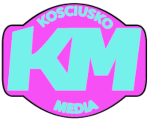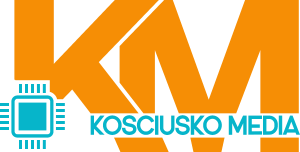The video from my YouTube channel follows after this article if you’d like to watch that. It will have some of the same information as this. So, let’s start off with what is probably a question you are asking, why Blender?
Why Blender?
Well, Blender is first and foremost free and open source. That’s a big bonus, but the main reason I use it is because I’m used to it and I like having the ability to look all around my model which isn’t as easy to do or sometimes even possible in a lot of other software. Another reason is that even though it is usually used for 3D characters for gaming and sometimes movies, it is also quite good as a CAD program. No, you can’t take measurements and do some of the other things that you can with other programs but there are ways around that which I find quite easy to do. Also, let’s face it, you aren’t going to get perfect measurements out of your 3D printer anyway. You’ll get close but not exact. We will always have to allow for some tolerances. So, that’s the why. Let’s move on to the how.
Setting Up Blender for 3D Printing
Open a new project in Blender. The first thing you want to do is select both the light and the camera and delete them. Just left click them and press delete on your keyboard. Leave the cube where it is. If you make a mistake in Blender you can undo by pressing [cmd] or [cntrl] + [Z]. Now that you have done that it’s time to set the scale. You can choose either metric or imperial. I’ll be using metric.
The first thing we want to do is set the scene scale properties. The image below shows the scene properties section and the values you need to change. Change the length to millimeters and change the Unit Scale to 0.001. Once you have done that you will see that the cube is now 2mm x 2mm x 2mm. You will also notice that the scene grid is now huge. That’s because it is still set to meters. We’ll take care of that next.

To change the grid size click on the Overlays button at the top as seen in the image below and under grid change the number there from 1 to again 0.001. And now everything is set in millimeters.

Now, select the cube in the center of the scene. Press [N] on your keyboard. A menu will appear from the right side of the scene view. There will be several tabs depending on the add ons you have. You just need to select the Item tab. Go to the bottom and under dimensions set the X and Y to the size of your printer bed. Mine is 220mm by 220mm so I have used those numbers. This gives you an idea of what will fit on your printer bed before you print it on your 3D printer. Also, it’s a good idea to make the representation of your printer bed wireframe so it isn’t distracting. To do that, select the Object Properties as seen in the following image and under Viewport Display change Display As to wire.

Finally, there are some add-ons you should enable to help with design for 3D printing, especially for functional parts. To add them go to Edit at the top of blender and click on preferences. A list of all of your available add-ons will appear (you can download more if you find some you’d like). The ones you really want to have for this project are Add Mesh:Extra Objects, Mesh:3D Print Toolbox, and Add Mesh:Bolt Factory. Those should be the main add-ons you need for now. Also, just to be safe, make sure that import/export .stl is selected as well (it is usually default on)
Designing with Blender
Blender is a very powerful 3D creation tool and once you get used to how it works you’ll be able to speedily make all kinds of 3D objects whether for 3D printing or something else. Keyboard shortcuts make life much easier when using blender so let’s go over a few of them now and then I’ll show you how to make a roller that is used for my tank treads. It looks a lot like a spool for thread.
Scaling –
there are several ways you can scale an object. You can press N and change the size numerically like we did with the print bed or you can use your mouse. If you are in Object mode (as opposed to edit mode which we’ll go over soon) you can simply press [s] and move your mouse and it will resize the object in all directions. If you only want to resize on one direction or axis as I will call it from now on, you can press [s] and then the key for the axis you want x,y, or z. X and Y are length and width and Z is height. So, pressing [s] then [x] then moving your mouse will increase or decrease the width of the object. You can also scale an object on all axis except for one by typing [s] then holding [shift] and pressing the axis you want to skip. So, pressing [s] + holding [shift] then pressing [z] will scale the object only on the x and y axis.
Scaling in Edit Mode –
If you just want to move or scale a face or an edge or even a vertex you can do that in edit mode. There is a drop-down menu on the top left of the screen that will say Object Mode when you first start Blender and have an object in the scene. If you click that drop-down you can select edit mode. When you do that you will see three boxes appear to the right of that. They are Vertex, Edge and Face. Selecting one of these tells Blender which one you want to manipulate (See the image below). For instance, if you select face, you can then click on any flat surface of the object and move it with your mouse, you can also resize it using [s] just as you did with the object as a whole.

This is just a quick getting started lesson. There are many websites that contain years of information about Blender. I couldn’t begin to cover everything even if given months to do so. So, I will give you a couple of quick keyboard shortcuts and then you can watch the video to see more in-depth how I have created the beginnings of my robot’s body.
Number Pad Short Cuts
Regular Short Cuts
[s] – scale
[r] – rotate, this can be used just like scale, selecting an axis after the [r] to rotate on a specific axis
[m] – this is a great way to connect vertices. If you have more than one vertex selected you can press [m] and a menu will come up asking you where you would like to connect them, in the center, at first selected or last selected, etc.
[b] – This will bring up a bounding box that will allow you to select everything you cover with it all at once
[shift] – holding shift while selecting, objects, edges, faces or vertices will allow you to select more than one at a time.
[Alt] – if you hold alt and select an edge or a vertex it will also select every edge or vertex that is directly connected to it. It is sometimes limited by out of place vertices or edges but it works well regardless.
I think that is good enough for now. You can watch my video to see more of how I have created the beginnings of my robot’s body prototype. Thanks and enjoy.



